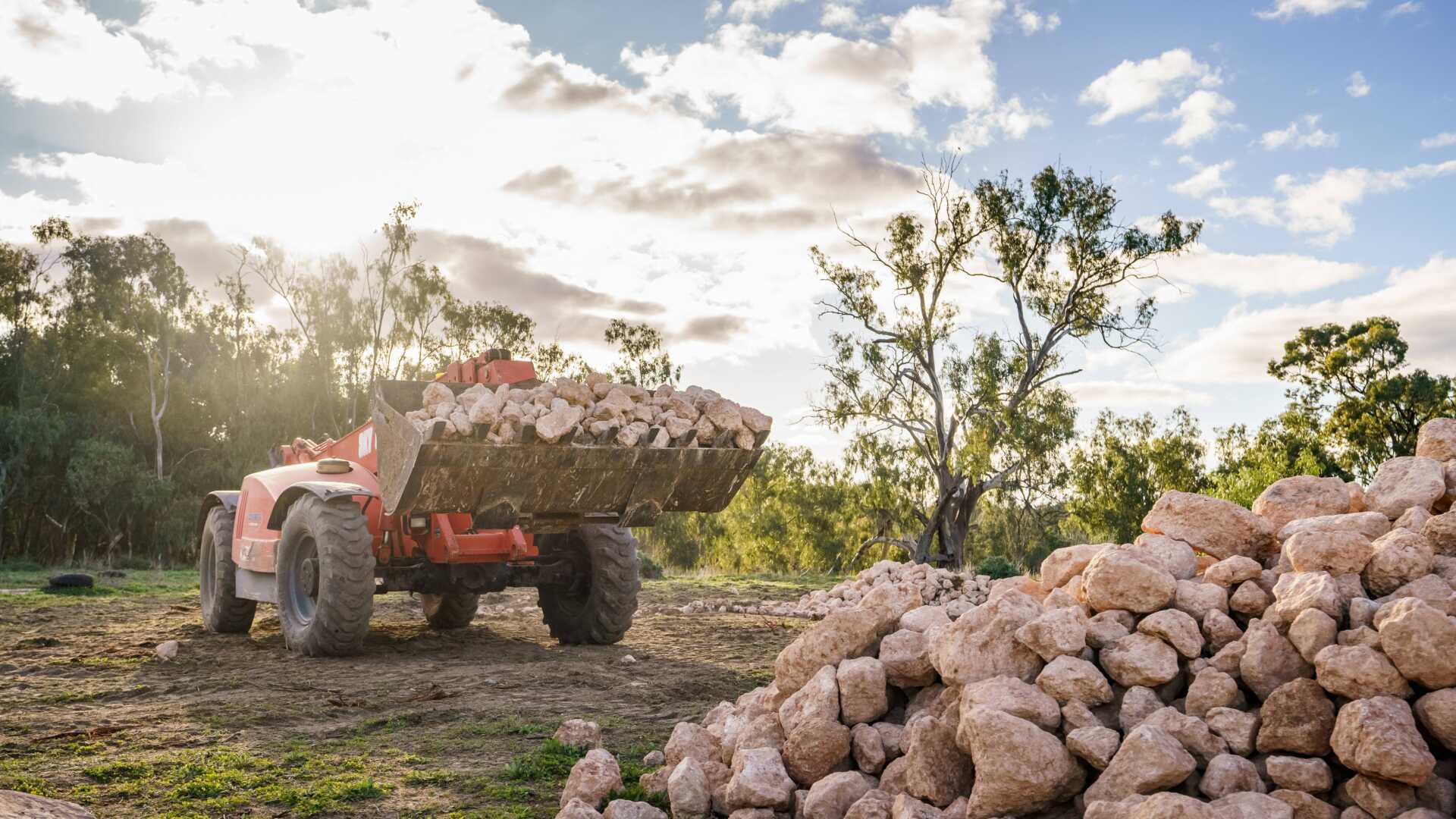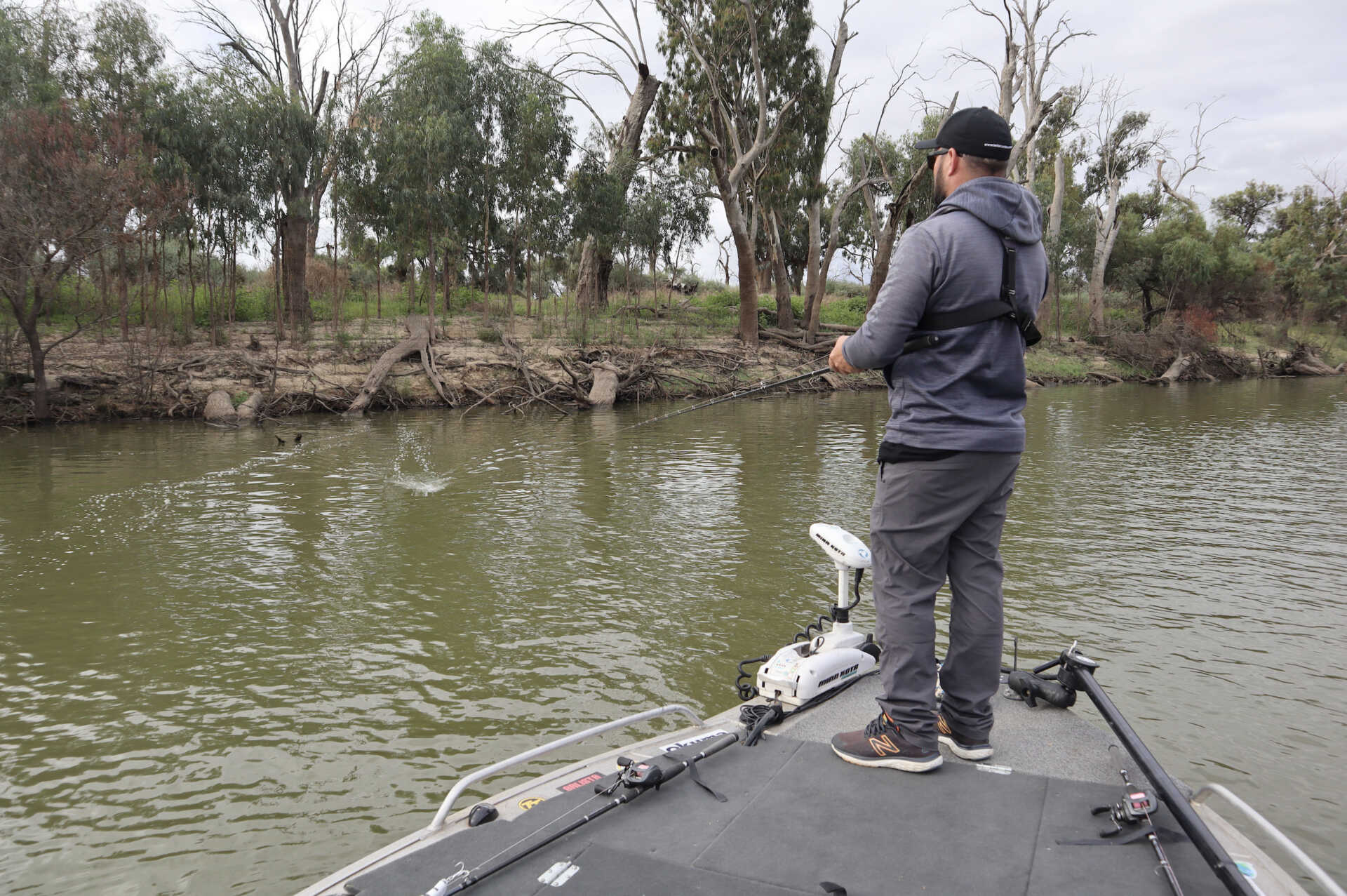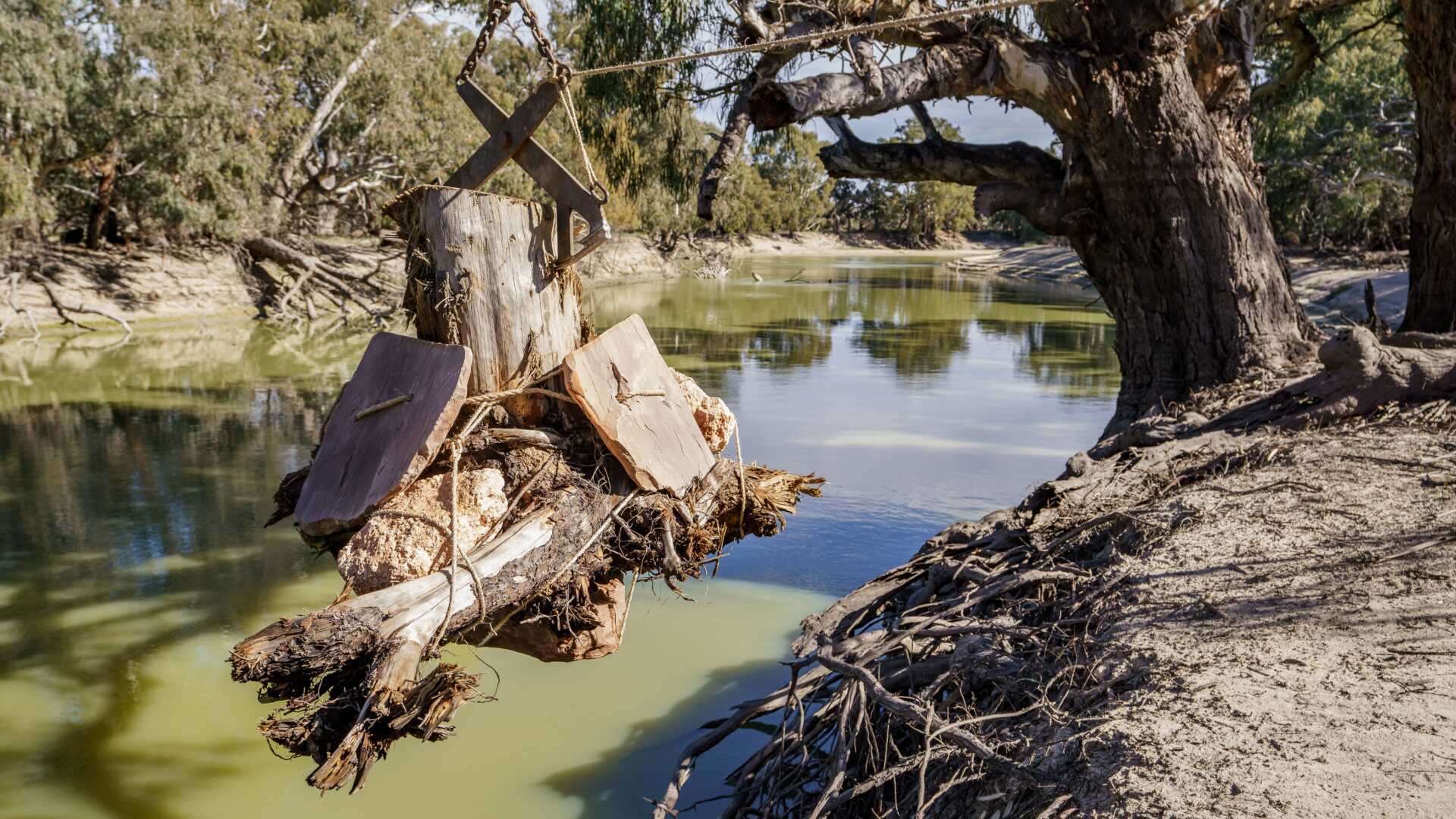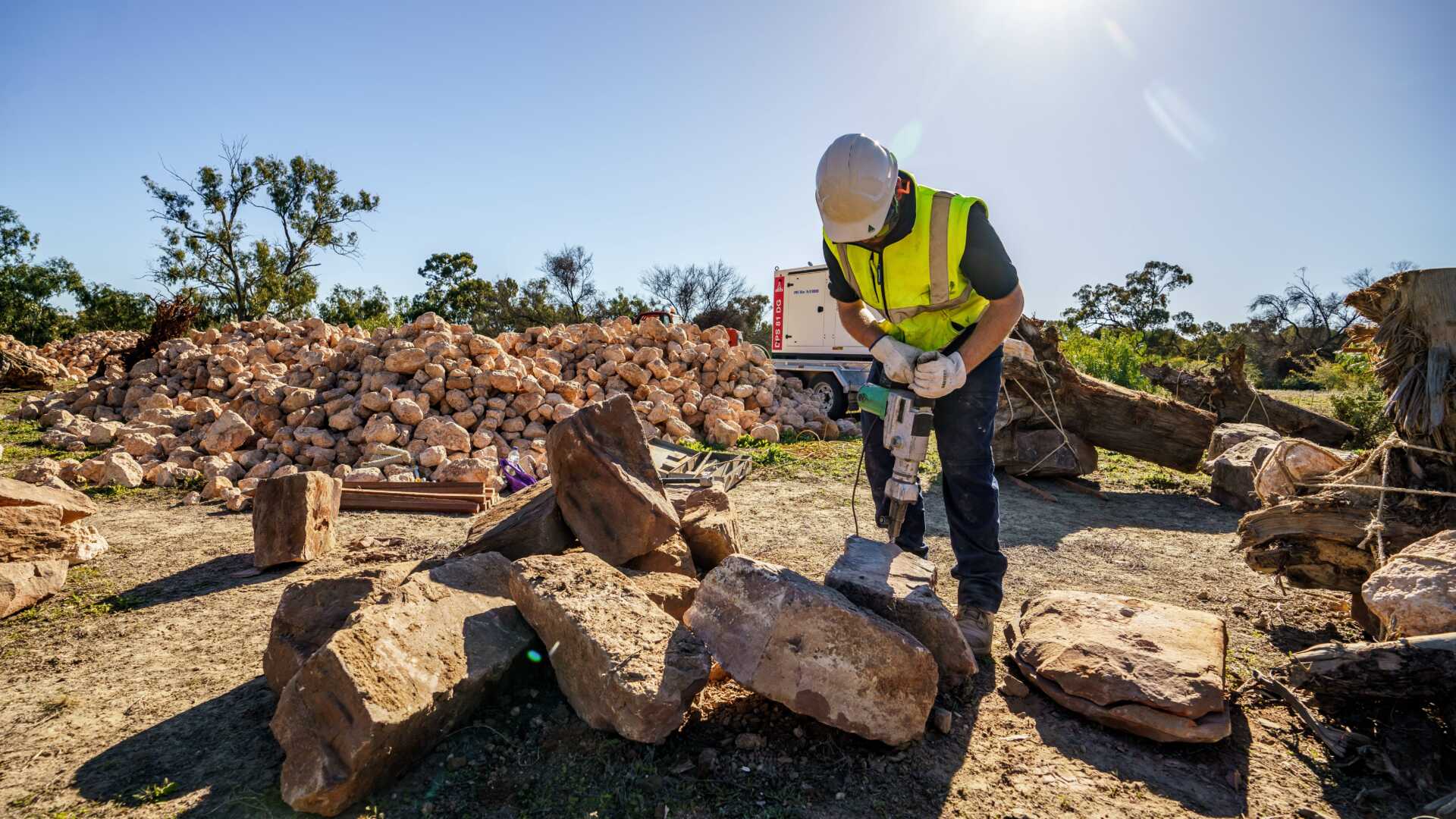Lower Darling re-snagging project a success thanks to volunteers and some Full Scale help

As the host of The Full Scale Fishing Adventures, Lubin Pfeiffer knows first-hand how much the Murray-Darling Basin needs a helping hand.
He was only too happy to assist with OzFish Unlimited’s latest re-snagging efforts in the Lower Darling, one of the largest in-stream restoration projects by Australia’s recreational fishing charity.
As part of OzFish’s River Repair Bus program, OzFish worked with local anglers and community for more than 18 months to plan for the massive installation which was delayed due to the floods.
The group ensured volunteers were there to roll up their sleeves to improve habitat for native fish by replacing lost woody and rocky habitat in the Lower Darling River and completed kilometres of waterway clean-ups.
The benefits will be immense to rebuild the native fishery with 35 large habitats and 100 tonnes of rocks installed in addition to 300 litres of rubbish collected with 920 hours collectively put in by the volunteers.
Replacing the natural snags and rocks back into the Lower Darling is essential as millions have been removed over the past 200 or more years. Lubin was on board when the massive installation happened.
“I think the great thing about what OzFish is doing is they’re returning their rivers back to their natural state,” he said.
“During early European settlement it was the norm to take all the logs and the rocks out of the river, simply because it was better for irrigation, it also allowed the riverboats to pass through easily because the rivers were the highways.
“But what has happened is that it’s decimated native fish populations because there’s nowhere for fish to live.
“So the way to fix the problem is to return structures back into the rivers, which provides more cover for the fish, gives them somewhere to hide away from carp and other predators.
“The process for doing that is firstly you have to collect the logs and the rocks, and then we bring them out onto site, using the machinery, to return them into the river.
“The long-term vision of this project is to return the Lower Darling River into a healthy, complex river system which not only helps us as fisherpeople but is a great thing for the environment.”
Pfeiffer said he had learned a great deal about the importance of restoring habitat after attending fishing talks and re-snagging projects with OzFish in recent years.
“Wherever the water’s good I’ll fish within the basin, whether it’s the Darling or the Murray or any of the tributaries, I just really like it as a whole. You’ve got all the wildlife and the rivers themselves and the fish,” he said.
“You can see it when you fish along the rivers. You get somewhere that is a little bit more populated and sure enough all the logs have been cleared out.
“It makes sense that there was stuff there previously that’s been removed to restore it.
“It was one of the biggest things I learned at one of these OzFish talks that you can have three or four metres of a clay bank and if you put a tree in there, it will triple the number of Murray cod in the area, just by putting a single large log in that small area.
“It’s just so important, it makes so much sense in terms of increasing the habitat but also increasing the liveable areas for the fish in the river.
“It makes a small bit of river a lot bigger. You get bigger fish numbers as well as areas for those fish to live.
“There’s so many carp in the river now since the flood and it just shows how important snags are for allowing the native fish to thrive.”
Re-stocking efforts in Australia have yielded mixed results and Pfeiffer said it was only worthwhile if combined with strategic habitat restoration.
“Stocking fish is one thing but creating that habitat, giving somewhere for the fish to live, it’s the best of both worlds, it’s a really positive thing,” he said.
“You can’t really just go and put fish in the water, you’ve got to have places for them to live so that when you do stock them, the stocking’s successful and those fish are allowed to get away from predators.
“Hatchery-reared fish are not attuned to getting away from predators so it’s even more important to have logs in the rivers so I try to spread the word about that as much as I can.
“It’s the last piece of the puzzle. Re-snagging is gaining momentum through OzFish, the habitat restoration gels with the stocking efforts of other groups. You can’t do one without the other. It’s so nice now that we’ve got OzFish pushing this habitat restoration focus across Australia for our native fish.
“From my experience when I’m heading up the river looking for places to fish, generally you don’t find fish along clear banks that don’t have any structure so I’m looking for any sort of habitats, whether it be small logs, large logs, rocks or anything like that.”
He added that the vast majority of rec fishers are on board with protecting and restoring the environment in and around our waterways.
“Once you create habitat, the fish will sort itself out.
“We are custodians of the water. We’re the eyes and the ears on the water so it’s important that we have an understanding of it all.”
Restoring this habitat is vital to improving the fishery, providing anglers with more fishing opportunities while contributing to the overall health of the river and the range of species that it supports.
This project was funded by the Australian Government’s Murray-Darling Healthy Rivers Program, NSW DPI Fisheries’ Recreational Fishing Trust’s Habitat Action Grant Program and the Australian Government through the CRC Program. The project is also supported by BCF – Boating, Camping, Fishing and the local recreational angling community.






